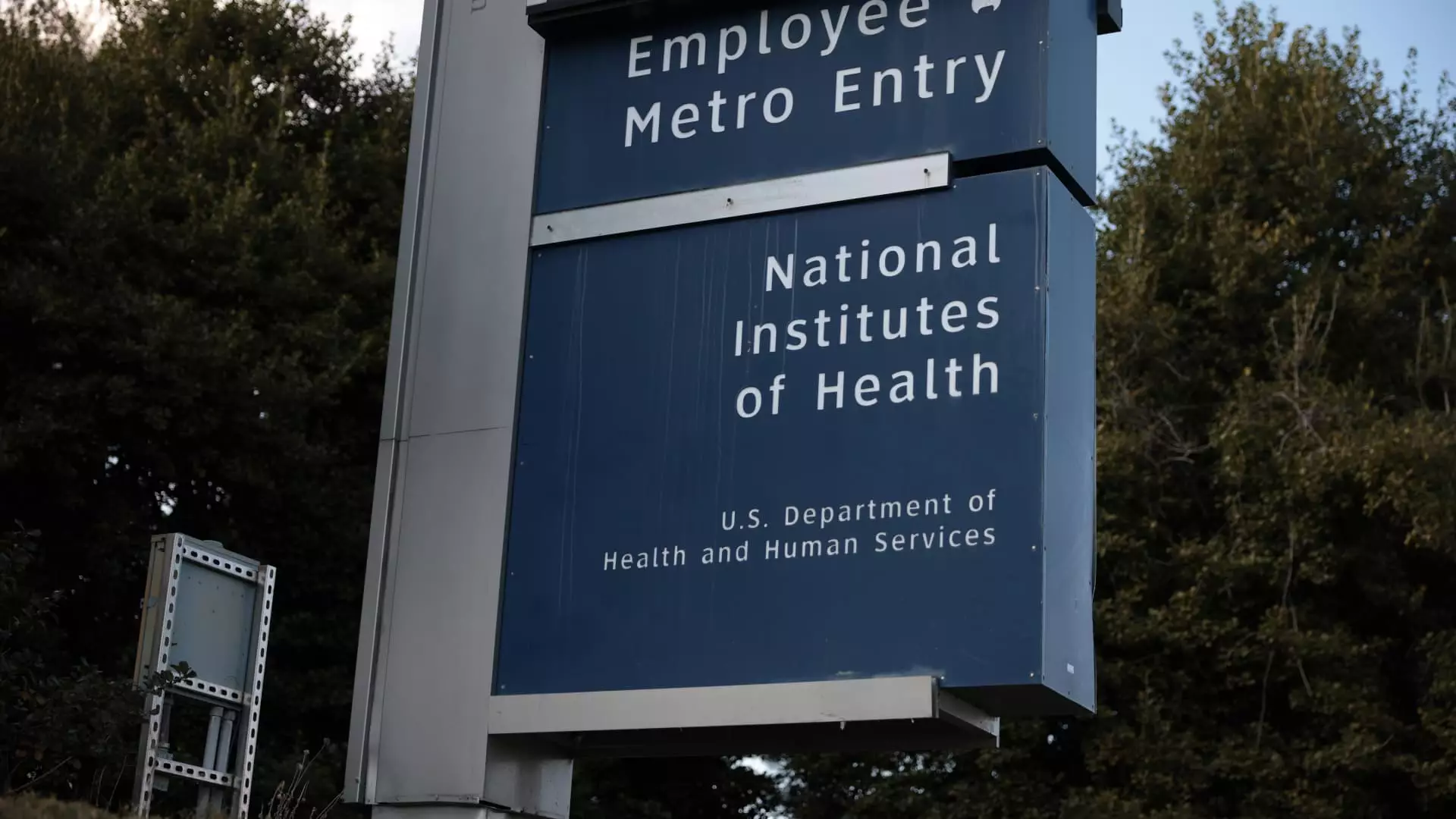The recent funding cuts proposed by the Trump administration to the National Institutes of Health (NIH) have sent shockwaves through the biomedical research community. As the NIH aims to cap indirect research costs at a mere 15%, the ramifications of this financial decision extend far beyond the immediate dollars and cents; they raise concerns about innovation, public health, and America’s role as a global leader in scientific advancement.
Reconfiguring Basic Scientific Infrastructure
The NIH serves as a vital lifeline for a range of research institutions in the U.S., funding nearly 60% of academic research. The proposed cuts threaten the very foundation of this research ecosystem. While the intention behind reducing indirect costs—such as administrative overhead—may stem from a desire for fiscal prudence, this policy misses a critical point: robust research requires substantial infrastructure. Cutting indirect funding is akin to making a half-hearted attempt to fix a leaky roof while ignoring the crumbling walls beneath it. Institutions rely on this funding to maintain laboratories, hire essential administrative staff, and keep the lights on. Without it, many esteemed research entities may find themselves unable to sustain their ongoing projects.
The Financial Impact on Life Science Companies
The fallout from reduced NIH funding is already evident in the market performance of life science companies that depend heavily on federal research grants. Major firms like Bruker and Illumina have seen their stock prices tumble since the announcement of the cuts, with reductions surpassing 14% and 10% respectively. This isn’t just a market blip; it is a harbinger of long-term challenges for companies that serve as the backbone for biomedical innovation. Investors are starting to recognize that reduced funding translates into fewer research projects, which in turn means decreased demand for life science tools and equipment.
The analysis by Bank of America highlights a crucial insight: if indirect costs are limited, institutions won’t be able to sustain the very conditions that enable effective research. In a landscape where competition for funding is already fierce, these cuts could create a sluggish environment ripe for mediocrity rather than breakthroughs.
Sowing Seeds of Uncertainty
Wall Street is uneasy, and rightly so. Market analysts are sounding the alarm bells over the potential long-term ramifications of these funding changes. It raises pivotal questions: How will research institutions manage without sufficient support? Will layoffs inevitably come for staff reliant on grant funding? As a researcher myself, I cannot ignore the anxiety that this uncertainty breeds. It has become abundantly clear that the well-being of the research community is hanging by a thread, tethered to political decisions being made far removed from the lab benches where real science takes place.
Compounding this uncertainty is a broader trend: many in the research community are already grappling with the aftermath of increased expenditures that characterized the Covid-19 pandemic. Institutions invested heavily in equipment and resources, leading to overstocked inventories. Regulatory scrutiny over funding creates an uneasy atmosphere for investors, researchers, and academic administrators alike.
The Threat to America’s Innovation Edge
At a time when the U.S. should be doubling down on scientific research and development, this reduction in funding threatens to erode our competitive advantage on the global stage. Historically, America has been a leader in innovative drug discovery and advanced technologies. If this funding policy goes through as planned, we risk stalling scientific progress and ceding ground to countries that are more willing to invest in, rather than retract from, scientific exploration.
The consequences of such a policy will reverberate across various disciplines within the life sciences, ultimately affecting public health outcomes. Reduced funding means delayed development for new treatments and interventions that could save lives. The outlook becomes even grimmer in terms of long-term research pursuits that take years or even decades to bear fruit, begging the question: Is this the legacy we want to forge for future generations?
The Ripple Effect on Local Economies
Beyond the research labs, these cuts have the potential to destabilize local economies. Researchers and support staff who are integral to academic institutions could face layoffs, resulting in diminished purchasing power in communities heavily reliant on these jobs. Research institutions are not just centers for education; they often act as economic engines that stimulate local employment and commerce. Cutting funding would not only cripple research projects but could also catalyze a wave of economic instability that ripples across neighborhoods.
The hiring freezes already being implemented—such as Stanford’s recent decision to halt staff recruitment—are indicative of an ominous trend. It’s a matter of concern when academic institutions start to retract their workforce. If universities cannot sustain their commitment to research, the long-term implications could stifle innovation and weaken the nation’s economic position in the global marketplace.
By cutting hopeful paths for future scientific advancements, the Trump administration’s proposed NIH funding cuts could transform a once-thriving research ecosystem into a barren landscape of missed opportunities and stifled innovation. It’s time for policymakers to reconsider the actual ramifications of their funding policies, for the future of American biomedical research—and, by extension, the health of the nation—depends on it.

